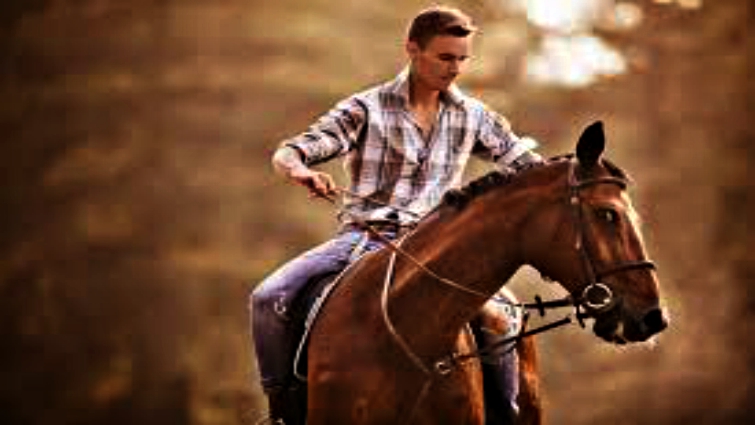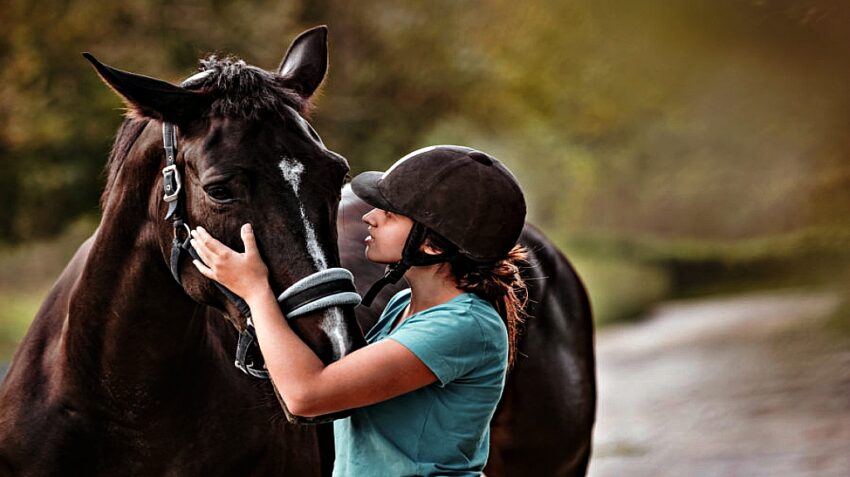Horseback riding is different from other sports specifically because the rider and the horse have to learn to communicate with each other in less noticeable ways comparing to various sports disciplines who are way more obvious when it comes to communication. The rider must learn perfectly how to use a language that relies strongly on physical movement. We are pretty convinced that if you have a strong will and are determined on learning the ways to communicate with your horse only with a little bit of practice, you will be able to discover how to “speak horse language”! It all comes down in learning how to read all the various ways horses move their bodies and comprehend their actions when they interact with one another and humans.



Below we are sharing with you some tips who are guaranteed to improve your communication with your horse:
The Seat
We are starting with the number one tip: If you don’t have a stable, balanced seat, you will never be able to communicate properly with your horse. You can reach so many things through your seat that you didn’t even know about!



Calves
Soft calves can express courage and trust to your horse. Use a more powerful calf aid to demand bend or strengthen a two-track movement but then deliver again to reward and reinforce your horse’s response.
Lower Back
Technically the lower back is part of the seat but it can send separate signals through the seat that are not necessarily connected to the buttocks.



Knees
We should write another article just to show you how important knees are for communicating with your horse and the way that they affect horses’ movements. Riders often tend to release their seat to pinch with their knees. These mixed signals could cause the horse to hollow his back or slow down despite the seat aids. Release the knees moments at a time and wait for the horses’ reaction, this way you will understand how to react.



Shoulders
I’m pretty sure you don’t know the true power of your shoulders. If you don’t lean back, you can influence your horse to shift his weight further to the hind end without jerking the bit in the horse’s mouth or causing him to hollow his back.
Thighs
The thighs have a strong impact on helping the rider in finding the right balance in the saddle. Besides that, they can strengthen your bending aids so that you have contact with your horse’s side from the seat, through the thigh, to the calf and foot.



Feet
The feet play a role in communication as well. Keep your feet parallel to the horse’s side and turn the toes out to create more of a wall especially for a lateral movement.
Fingers
The fingers should be closed in a soft, light fist so that the communication going to the mouth is logical and constant. Some moments might require a more solid feel while other moments can be softer. But in all cases, you should avoid opening and closing the fingers.



Eyes
One of the first things you learn on riding lessons is to always check the horse’s ears in order to understand their state. Horses have astonishingly expressive ears, and they’re quite easy to read, which is why this is an important lesson for everyone, equestrian or not! If a horse’s ears are perked slightly forward, they’re engaged, involved, and possibly a bit sensitive. If their ears are drooping to the front or sides, they’re satisfied and comfortable, and maybe a little bit sleepy. If a horse’s ears are pinned back flat to the head, that horse is frightened or irritated.



Voice
You reasonably recognize from your own experience that voice is a huge support to your body aids. If you can train your horse to learn some words or sounds, you can give him a heads-up while you are applying your body aids or even before. Horses might not say what they’re thinking in words, but they still have an extraordinary talent for understanding humans so you just need to learn to read what they’re trying to say to you.
We all know from our own experience there is no such thing as riding with aids isolated from each other. Although you can discover how to develop arms and legs independent of the seat, and we can dissect each body part to the core, the secret to riding is that every movement you do is taken by the horse in just one moment.



